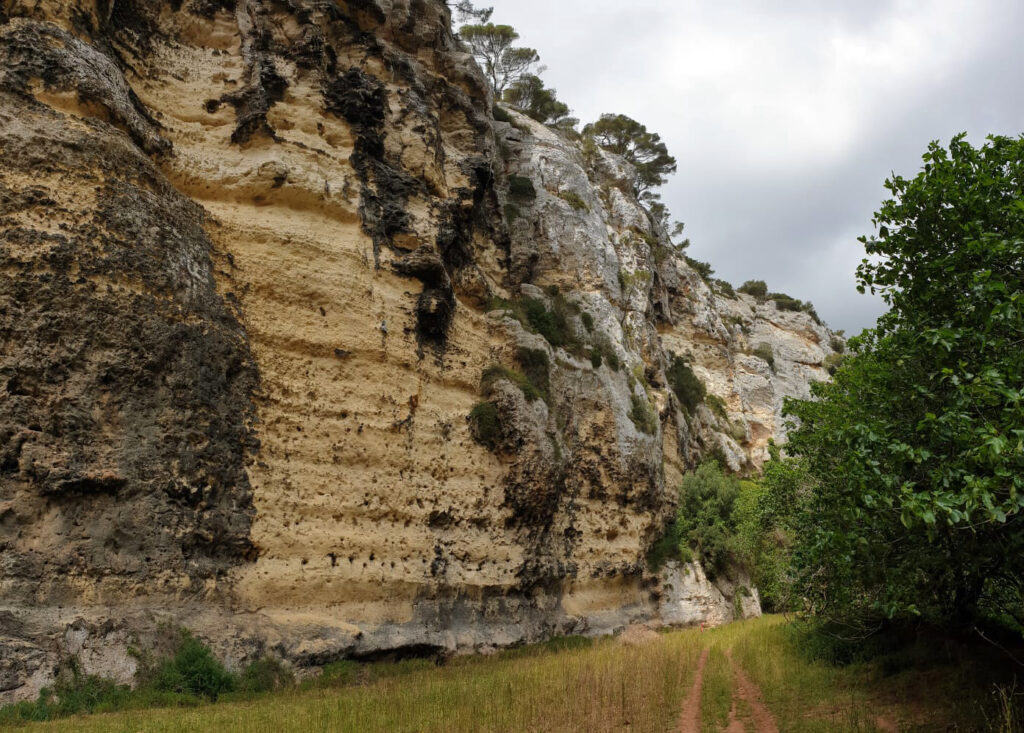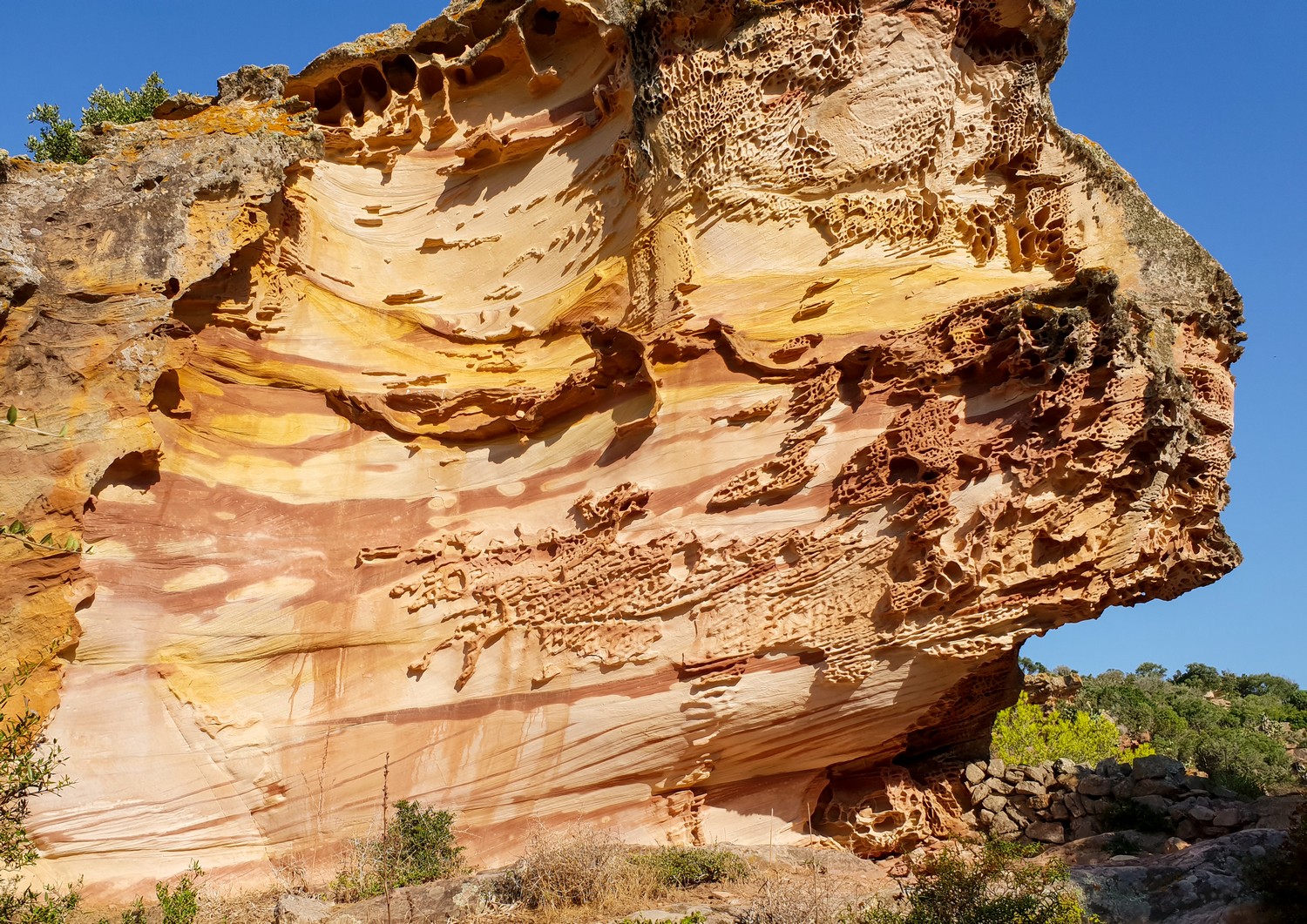Geological characteristics have a big influence on Menorca landscapes. Stone and rock are key elements and define the chromatic diversity of the island and many of its most recognizable views.
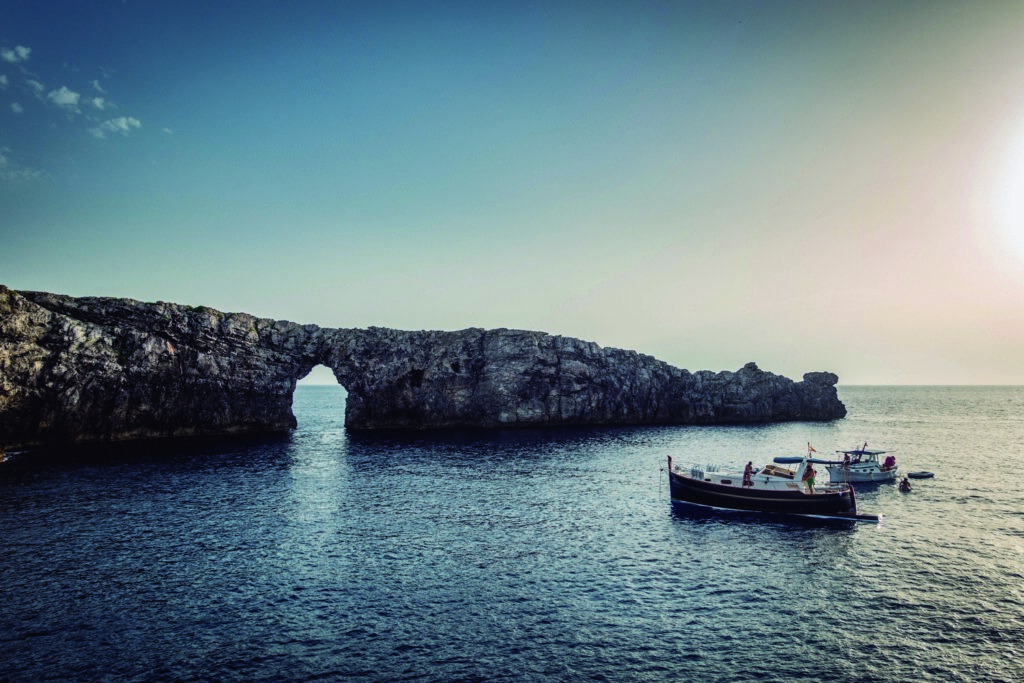
What colors define the Menorca essence? At first glance, many visitors may get the impression that it would be the crystalline turquoise of the waters of the most emblematic coves. Or the vibrant green that the fields show most of the year. Or all the hues of yellow used by the sun to dye the territory along the day.
However, in the depths of its existence, the colors that define the varied landscapes of the island come from the diversity of its geology. Its rocks chromatic palette begins in the white that dominates the southern half and the northeast. And it ends in the dark, almost black rocks of certain areas of the north, such as the surroundings of Cap de Favàritx. Between these two ends, there are the grayish tones of the surroundings of Cap de Cavalleria and Fornells, for example. As well as the bright reds of the area around Cala del Pilar.
Stones, rocks, ‘macs’, pebbles and rocky outcrops with all kinds of shapes and configurations, are part of the most genuine personality of the island. It is not surprising that megalithic architecture was the flagship of the most emblematic ancient civilization on the island, Talayotic. Likewise, it is understandable that the dry stone tradition is another of the key elements of Menorcan DNA.
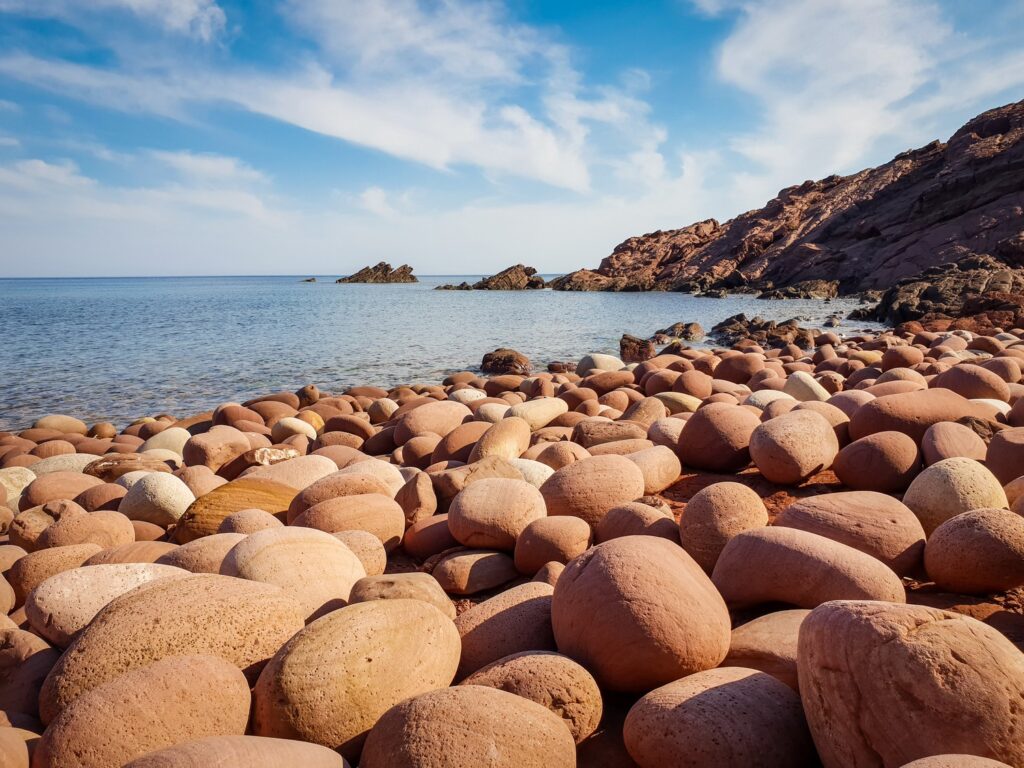
One island, two geologies… or even more
The geological richness of Menorca is surprising given the limited extension of the island. In the 700 square kilometers of its territory there is an unusual geodiversity and an impressive geological heritage.
Geologically, Menorca is divided in two. The south (Migjorn) and the northeast are composed of calcareous rocks formed between five and eleven million years ago. The rest of the northern half (Tramuntana) responds to a much older origin, more than 400 million years ago in some places.
The fracture line between these two Menorcas runs from Port de Maó to Cala Morell and follows almost linearly the main road of the island. Going from Maó to Ciutadella, the oldest and also more irregular soils are on the right side, while the most modern and homogeneous ones are on the left.
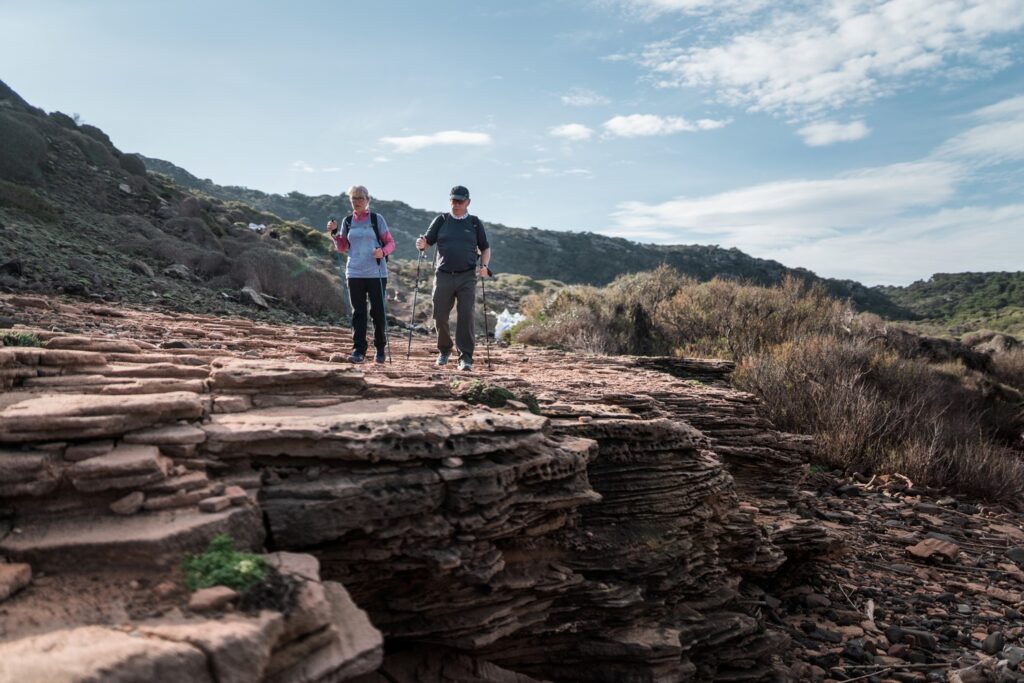
The ‘marès’
The most significant rock in Menorca is known as marès. It stretches across the southern half of the island and is part of the extensive, fairly horizontal limestone platform that gently slopes down to the sea. Numerous ravines cross it and make their way to the southern coast, forming the beautiful coves that make Menorcans proud.
Marès is a sedimentary calcareous rock, formed from compacted sands, with a sandstone-like texture. In the past, many of the island’s buildings were built with this stone. Its quarries are today a memory of the past, practically exhausted and abandoned.
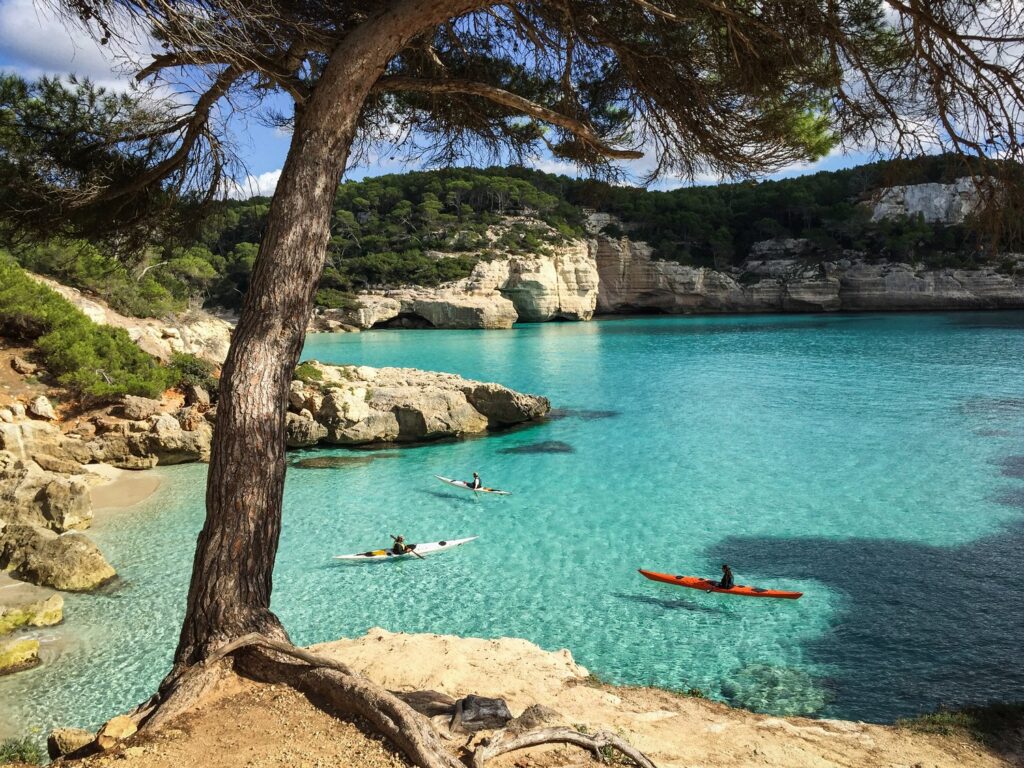
Geological points of interest
Menorca has valued its geological heritage, by the hand of the Biosphere Reserve and as a formula to contribute to sustainability and local development. In this sense, a project was started in 2016 to identify the most relevant points of the island geology.
The result of the initiative was the creation of an inventory with 35 points of geological interest in the Menorca Biosphere Reserve. These sites, some of them with an apparent magic, are worth visiting, to get to know the most essential core of the island.
Menorca 360º and Camí de Cavalls 360º routes allow you to discover some of these points of geological interest, such as Albufera des Grau, Barranc de Trebalúger, Cap de Cavalleria area or Cap de Favàritx, among others.
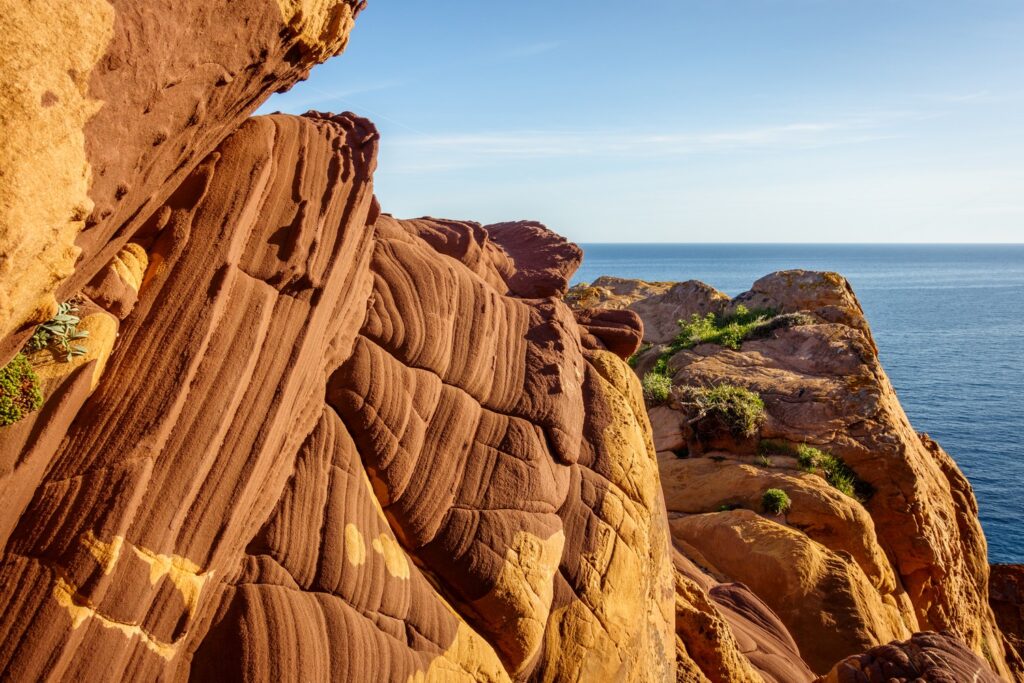
Menorca Geology Center
Those who have a greater interest in the geology of Menorca and want to go deeper, have the option of visiting the Geology Center of Menorca. Located in the town of Ferreries, it stands as the zero kilometer of Menorcan geology. They explain it to visitors through exhibitions and other tourist proposals.
